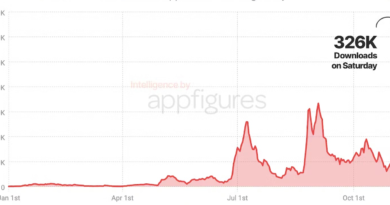Nolej’s AI-generated classroom tools are a force multiplier for educators
The idea of bringing AI into the classroom doesn’t sit well with everyone, but the team behind Nolej believes that generative AI can supercharge learning — all while keeping teachers front and center. Nolej AI is an AI-powered tool that lets educators quickly generate interactive learning modules like quizzes, flashcards, games and interactive videos.
“We are teacher-centric, we put them in the driver’s seat and we want to make sure that they have the tools to teach our children, with the right tools in the right way,” Nolej executive chairman Vincent Favrat told TechCrunch.
Now, at the TechCrunch Disrupt Startup Battlefield competition, the Nolej team is launching the first version of Nolej AI, which will work in multiple languages, including English, French, Spanish, German and Portuguese. Nolej AI integrates into learning platforms, including Google Classroom, Moodle, Microsoft Teams and Canvas by Instructure, with more on the way in the coming months. Those integrations mean that Nolej AI plugs directly into many educators’ existing workflows.
Across online and in-person classroom settings, interactive material distills traditional textbook education into bite-sized portions that make it both more engaging and more likely to stick with learners. But crafting a parallel curriculum of crossword puzzles and multiple choice quizzes is a job unto itself, and yet another task that time-strapped teachers are forced to juggle. Using Nolej AI to generate that kind of material takes seconds or minutes instead of hours, and teachers can quickly review it rather than crafting each interactive learning module by hand.
Nolej AI co-founder Bodo Hoenen believes that AI can bridge the gap between education’s present and its near future. “We are helping educators generate curriculum in real time,” Hoenen told TechCrunch.
“We are designing something for the future of learning. There are not many institutions that can create these types of experiences today, because they are sitting on infrastructure that was designed 20, 30 years ago.”
AI is far from perfect, which is another reason Nolej is designed to keep teachers in the “driver’s seat.” The team considers the AI phenomenon of hallucination — in which generative AI serves up reasonable-sounding but wholly false results — a “huge challenge” and built their product with that in mind from its early days in 2021.
While the large language models that tend to be synonymous with AI right now draw on the entirety of the internet to output content with a simulated human touch, Nolej AI tackles its task within much smaller parameters, relying on user-provided materials rather than the internet at large. That model, which the Nolej team calls “ground truth,” allows educators to feed a curriculum, lesson or body of information into the generative AI, which then crafts supplemental materials crafted only using that input.
“We don’t want to reinvent the wheel, so we take what works,” Favrat said. “Even the format that we are using, the templates — they are proven, they work — they are used by hundreds of millions of people. But we want to upgrade the system so that it fits the needs of the learners.”
Favrat notes the upheaval to education caused by the pandemic as one inspiration for developing tools through Nolej. The ubiquity of online classes and even online materials for in-person courses necessitates new learning formats, many of which are well-established at this point.
“You cannot just upload a PDF and ask your students to read it; it doesn’t work anymore,” Favrat said. “Student learners want something interactive, gamified — we know now what works for the learners so it’s not like in the 19th century when science did not know exactly. We know what works best to memorize, to perform as a learner.”
Knowledge aims to boost not only knowledge retention and engagement, but also course completion rates. Massive online courses are infamous for their high dropout rates, but interactive learning that’s optimized for an online setting can keep students plugged in.
“That means that they go up to the end of the course, as opposed to say, ‘Hey, I’m bored, I dropped out,’ and that’s it,” Favrat said.
Nolej AI is the company’s first core product, designed for e-learning in a somewhat traditional classroom setting, whether online or off. But the team is also working on another tool geared more toward self-directed learning, called Nolej LX. Hoenen uses the analogy of Lego building blocks: If Nolej AI generates the Lego pieces, then Nolej LX designs experiences out of all the bricks.
Self-directed learners can set a learning goal with Nolej LX and the tool will map out the nodes of learning necessary to cobble together an understanding. The goal could be simple, say learning French for a big tour of wine country. But it could also be complex — like learning a skill so specific or advanced that the curriculum doesn’t exist yet.
“I can query Nolej, [which] can then generate you a map of ignorance, essentially all the Lego bricks, all the concepts you need to learn to build between wherever you are, whatever your current understanding is, and whatever learning goal you have,” Hoenen explained. “This really ties into the learner’s intrinsic motivation.”
“I’ve got kids and they keep asking, ‘Why am I learning this? Why am I learning this? Why is this important?’ And you know, suddenly providing these learners with a map of their ignorance, they understand, ‘Okay, this is why I’m learning it, because it’s part of this concept, or this idea.’ So there’s a lot of mechanisms that make it a lot more engaging and exciting.”




